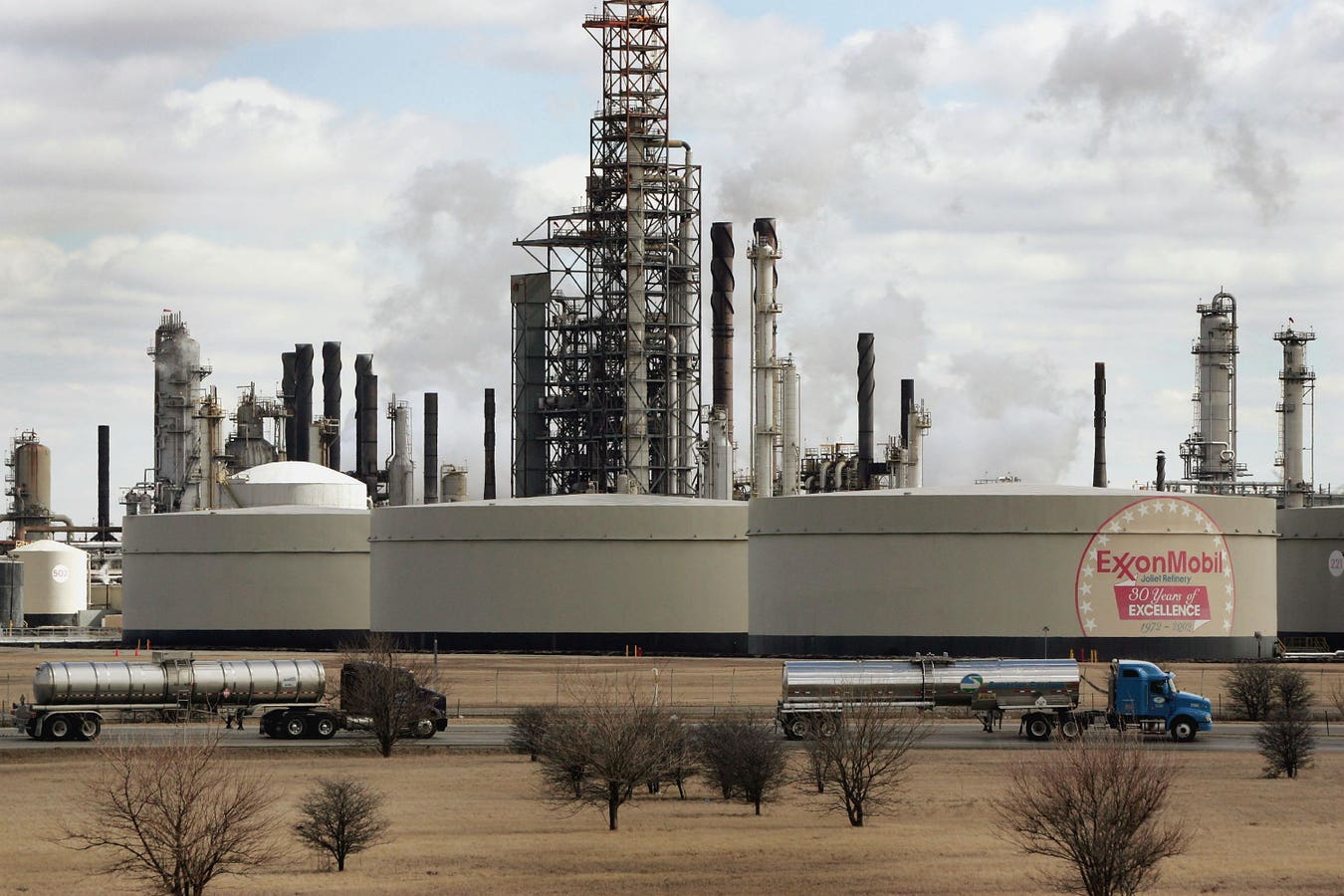The Democrats just introduced a bill seeking $500 billion in climate damages from oil giants such as Exxon and Chevron. While I understand the desire behind this legislation and I am not opposed to a carbon tax, we all need to be careful about treating the carbon tax as a silver bullet with little to no unintended consequences. And we’ll make the case using Exxon as an example.
My co-author and fellow Forbes contributor Bob Eccles challenged the two of us to assess how a $100 per ton carbon tax would stress Exxon’s 2020 financials. What follows is an early and a relatively crude attempt at such scenario planning. We view the financial analysis of Exxon as a way of teeing up the complexity of dealing with Scope 3 and other policy issues. To get everyone on the same page, Scope 1 emissions are direct greenhouse gases (GHG), measured in tons, from Exxon’s operations such as production and drilling. Scope 2 are indirect greenhouse gas emissions from energy purchased by Exxon. Scope 3, the most controversial, includes the indirect emissions resulting from the consumption and use of oil and gas and chemicals sold by Exxon. It is important to note that Exxon has pledged a reduction of only Scope 1 and 2 emissions from operated assets (30% cut by 2025), not for Scope 3.

(Photo by Scott Olson/Getty Images) | GETTY IMAGES
To avoid dragging you through the numbers, I summarize the questions we ask and the answers we uncovered.
Q1: What would a $100 carbon tax do to Exxon’s income statement?
If Exxon were to absorb the costs of only scope 1 and 2 carbon emissions, it would involve a $9.2 billion cash outflow a year. This is on top of the $1 billion per year that must be spent to meet its emission reduction goals. That’s a total of $10.2 billion. Exxon has to either cut dividends or capex to pay for the carbon offsets/taxes and promised emissions reduction.
Q2: What if Exxon does not want to cut dividends or capex?
All else constant, oil prices at the pump will have to increase by around $0.20 per gallon if scope 1 and 2 carbon costs were passed on and by $1.14 per gallon, if carbon costs of scope 1, 2 and 3 emissions were passed on consumers. There would have to be similar increases in prices to intermediary users of oil such as chemical companies. The price hike works out to a 38% increase over $3 a gallon price of gas at which retails today. To be fair, a higher oil price might force the market to innovate faster and come up with carbon-neutral fuels, a consideration we have not explored fully as of now.
Q3: What would a $100 carbon tax do to Exxon’s balance sheet?
Assuming a $75 price of oil per barrel as it is today, Exxon makes $22 of post-tax profit. Scope 1 and 2 carbon reduction costs will consume $4 a barrel. A scope 3 tax beyond $18 a barrel will hence render Exxon bankrupt. However, the carbon tax for scope 3 emissions for barrel of oil works out to $43 roughly. Hence, Exxon cannot absorb a tax on scope 3 emissions and stay financially viable.
SUBSCRIBE TO OUR NEWSLETTER
Subscribe our newsletter to receive the latest news, articles and exclusive podcasts every week

